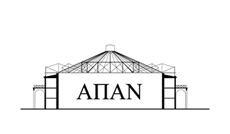Zachariadou (ed.), Via Egnatia Under Ottoman Rule (1996)
[Bibliography]
Vassilis Demetriades, Feridun M. Emecen, Irene Melikoff, Nicolas Oikonomides et al, Τhe Via Egnatia Under Ottoman Rule, 1380-1699. Halcyon Days in Crete II. A Symposium Ηeld in Rethymno, 9-11 January 1994, Elizabeth Zachariadou (ed), Halcyon Days in Crete II, (Institute for Mediterranean Studies, Foundation for Research and Technology – Hellas, Crete University Press, Rethymnon 1996)
The Via Egnatia crossing the Balkans and stretching from the Adriatic to the Sea of Marmara constituted an axis of strategical and commercial importance for many centuries; it was also connected with cultural exchanges and population movements. The Institute for Mediterranean Studies organised a Symposium focusing on these problems and this volume contains seventeen papers presented at it. The Symposium was held in Rethymnon, Crete, from 9 to 11 January 1994.
Contents: PART ONE: THE ROMAN AND BYZANTINE PAST Anna Avramea, Trace et fonction de la Via Egnatia. Du Iie siecle avant J.-C. au Vie siecle apres J.-C. Nicolas Oikonomides, The medieval Via Egnatia.PART TWO: UNDER THE OTTOMANS Tulay Artan, Periods and problems of Ottoman (women’s) patronage on the Via Egnatia. Irene Beldiceanu-Steinherr, Seyyid ‘Ali Sultan d’ apres les registres ottomans: L’installation de l’ Islam heterodoxe en Thrace. Melek Delibasi, The Via Egnatia and Selanik (Thessalonica) in the 16th century. Vassilis Demetriades, Vakifs along the Via Egnatia. Feridun M. Emecen, From Selanik to Manisa: Some information about the immigration of the Jewish weavers. Aldo Gallotta, Ilyas beg, I mutevelli e le origini di Corizza (Korce/Gorice). Gyorgy Hazai, Routes et langues dans les Balkans. Colin Heywood, The Via Egnatia in the Ottoman period: The menzilhanes of the Sol Kol in the late 17th/early 18th century. Machiel Kiel, Ottoman biulding activity along the Via Egnatia: The cases of Pazargah, Kavala and Ferecik. Irene Melikoff, Les voies de penetration de l’heterodoxie islamique en Thrace et dans les Balkans aux XIVe-Xve siecles. Rhodas Murphey, Patterns of trade along the Via Egnatia in the 17th century. Ilber Ortayli, Rodosto (extension en Marmara de la Via Egnatia) au XVIe siecle. Traian Stoianovich, A route type: The Via Egnatia under Ottoman rule. Gilles Veinstein, Avlonya (Vlore), une etape de la Voie Egnatia dans la seconde moitie du XVIE siecle? Elizabeth Zachariadou, From Avlona to Antalya: Reviewing the Ottoman military operations of the 1380s.
Total pages -xvi, 1-232: 254 (17X24)

